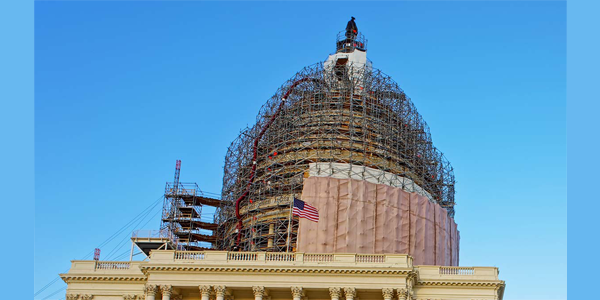
Is It Time to Increase the Size of Congress?
Written by Robert Eno
A statistic from the U.K. election makes one realize how far from the people our own people’s house has gotten. The House of Commons has 650 members for a population of roughly 65 million in the U.K. That’s one member of parliament – on average – for every 100,000 people. The U.S. House of Representatives has one representative for every 759,000 people. Is it time to readjust the U.S. apportionment model to get our representatives closer to the people?
The morning after the U.K. election, a former colleague of mine on the Young Republican National Committee – from when I was young and Republican – brought up a very good point on Facebook. Here’s what Dave Smith, from Texas, said.
While Smith is right that a House of Representatives of 2000 members is probably unwieldy, one of around 1000 members isn’t. Daily Kos has a pretty good look at the history of the size of the House and when and why it stopped at 435. Until after the 1910 census, the size of the House increased after every decennial census. Yes, I know it is the Daily Kos, but they are right here. The size of the House has been stuck at 435 since the 1912 election.The 1910 census (PDF) put the U.S. population at just over 92 million people. That means there was roughly one representative for every 211,000 people. That’s less than one third the current ratio. There’s an easy way to get back to a more representative House, and it would account for population growth. This would best be done by constitutional amendment.
To ensure a legislative house that represents the people more closely, here is a proposal to increase the size of the House of Representatives.
-
- The state with the lowest population shall be awarded two members in the House of Representatives.
-
- That state’s population divided by two shall be the base population number of a congressional district.
-
- The total population of the United States minus the territories and the District of Columbia divided by the number above shall be the size of the House of Representatives.
-
- No state shall have less than two representatives.
A system like that, applied today, would give the state with the lowest population, Wyoming, two representatives. The estimated population of Wyoming in July 2016 was 585,501. The population of the United States, at the same time, was estimated at 323.1 million.
The base population for a representative would have been 292,750. That would result in a House of Representatives with 1103 members. That would be significantly more representative of the people.
That’s just one proposal to make the Congress more answerable to the people. It is time to do so.
Article originally published at ConservativeReview.com.













